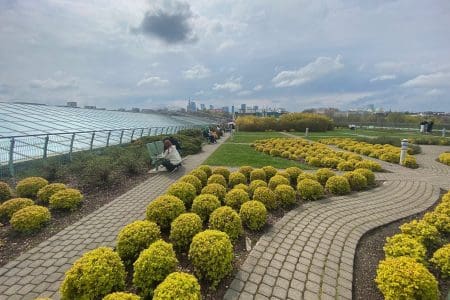Coinciding with the anniversary of the Warsaw Ghetto Uprising, Mark Bibby Jackson visits the amazing POLIN Museum in Warsaw, Poland.
Serendipity is an essential component of being a seasoned traveller. Sometimes you stumble upon a festival in a remote town that bewilders you. At others you make a last-minute decision to pop in on somewhere and spend a few days chilling. Or, as happened to me in Warsaw, you unintentionally time your visit for one of the most important days in the city’s calendar.
My guide Agnieszka Kuś greets me at my charming Chopin Boutique B&B in the heart of the city and immediately walks me to the nearby Muzealna Restaurant inside the National Museum. There is a distinctly retro-feel to the place which I am not quite sure is intentional or a sign of what to expect in the Polish capital.
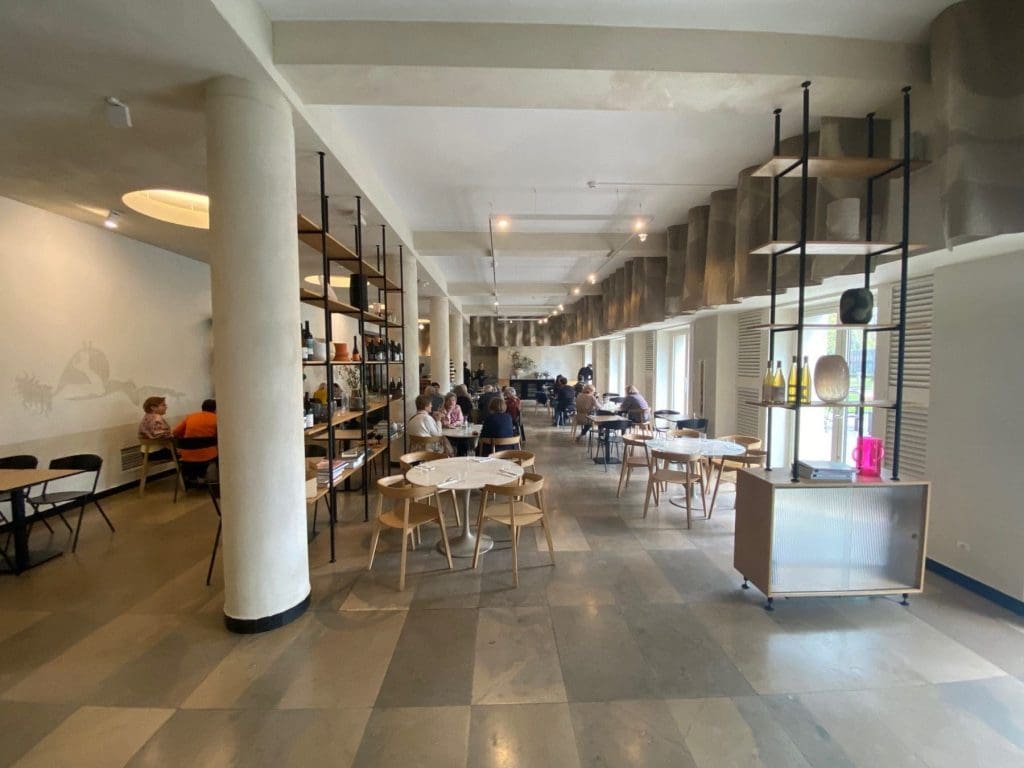
As I look at the menu, Agnieszka, who runs food trips with Tailored Tours explains that Warsaw is a “very vegan city”. Judging by this offering it is also very tasty. Although, I am anxious that any moment Smiley might sit on the table opposite me.
Agnieszka starts talking about “the anniversary” as though this is clearly the reason for my timing my first visit to Warsaw in April, before whisking me off to the ‘museum’. I nod knowingly, not wishing to let the ignorant cat out of the bag so early in our acquaintance.
It is only once we approach the POLIN Museum and see the large security preparations that the penny drops – I have arrived on 18 April, a day before the 80th anniversary of the Warsaw Ghetto Uprising. Serendipity.
Warsaw Ghetto Uprising
To be fair to myself – after all if I am not then who will be – part of my reason for coming to Warsaw was to learn more about the Warsaw Ghetto Uprising (including its dates). And for the next few hours I discovered plenty, guided by Agnieszka, who was equally informative and passionate about the subject – at times I thought she was about to burst into tears.
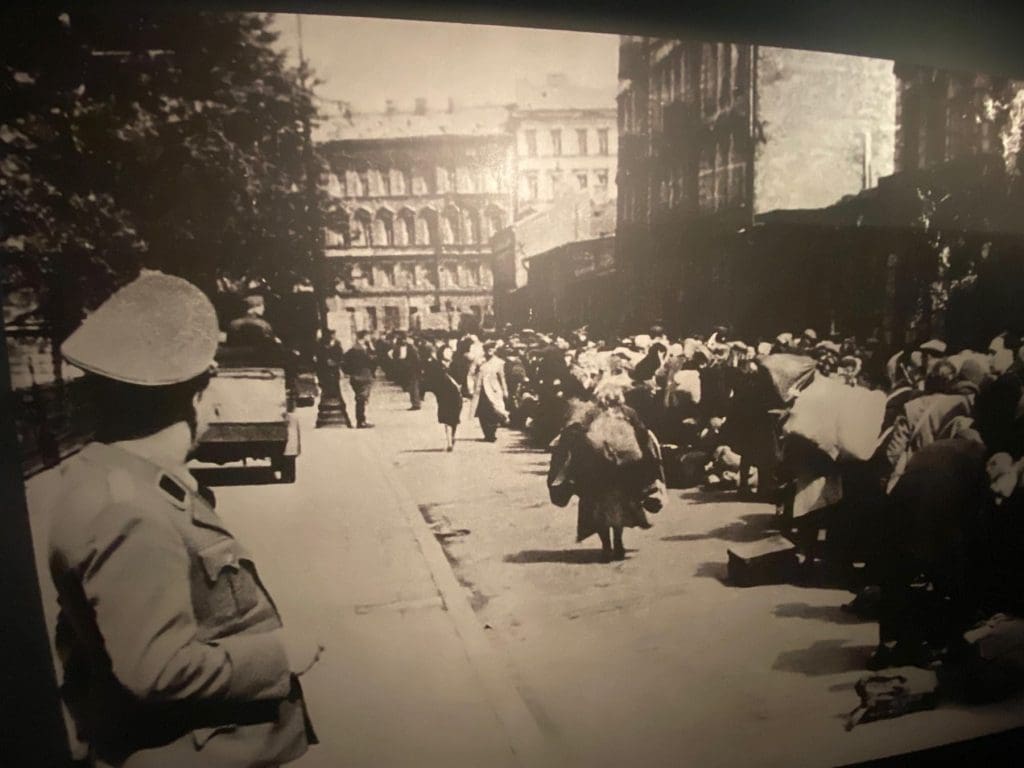
And my own tears are not too far away as I not only discover the facts of the Warsaw Ghetto Uprising but also get a glimpse into the experiences of those who lived, died, and occasionally survived the uprising.
First, some Warsaw Ghetto facts. Pre-war it is estimated that some 3-400,000 Jews lived in Warsaw, making it the largest Jewish population outside of New York, at the time. The Nazis formed the ghetto in 1940, removing some 10,000 non-Jews, and transporting Jews from around Poland into the ghetto.
Between 1940 and 1941, it is estimated that 100,000 people died in the Warsaw Ghetto from disease and starvation. In the summer of 1942, around 300,000 were transported to Treblinka extermination camp north-east of the city, in what was called the Grossaktion Warsaw. They never returned.
Approximately 30,000 Jews were kept in Warsaw and used for forced labour, although it is estimated that around the same number of people stayed in hiding. Although two partisan groups – the Jewish Combat Organization (ŻOB) and Jewish Military Union (ŻZW) were formed – the vast majority of people in the ghetto just tried to survive. They built bunkers and smuggled weapons into the ghetto.
On 19 April 1943, the ghetto refused to surrender to SS-Brigadeführer Jürgen Stroop in what became known as the Warsaw Ghetto Uprising. He consequently ordered the ghetto be burned to the ground. About 13,000 Jews were killed, with less than 150 German casualties.
The largest revolt by Jews against the Nazis in World War II, it was more an act of self-defence than uprising, according to Agnieszka. Marek Edelman, a ŻOB commander who managed to survive, said the purpose of their fight was, “not to allow the Germans alone to pick the time and place of our deaths”.
Agnieszka says it was really a “bunker uprising”. This is the thrust of the current exhibition ‘Around Us a Sea of Fire’, which opened on the day of my visit, to coincide with the anniversary. It provides a very strong sense of the claustrophobic effect of what it must have been to struggle to survive in this period, although clearly getting nowhere near capturing the horror. It also has 689 interesting historical photos taken by the Nazis when Stroop ordered the clearing of the ghetto.
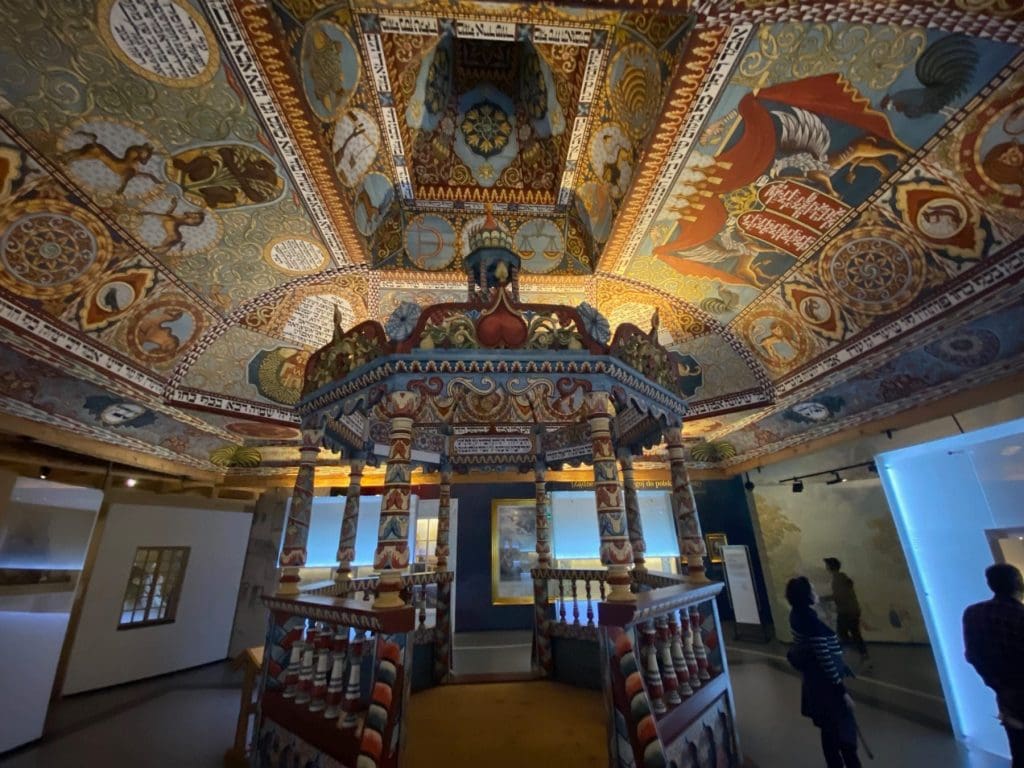
In one section, we have the words of the people who experienced this horror. One of them, Hena Kuczer, is a former teacher who still lives in Warsaw. It is a chilling reminder of man’s ability to inflict pain and suffering on others. The exhibition shows how we should not forget the events were “all about people” as Agnieszka explains.
POLIN Museum
Although POLIN is built on the site of the former ghetto, it is much more than the Warsaw Ghetto museum, telling the 1,000-year-long history of Poles and Jews. An amazing structure in its own right, it won the European Museum of the Year Award at EMYA 2016.
One of the attractions is an ornamented replica of the vault of a 17th-century synagogue, although I found the section representing what Warsaw looked like in the 1920s the most interesting. The museum holds no punches. There is no historic whitewash, with clear reference to the history of antisemitism within the country both before and after the Nazi invasion.
The story of the uprising continues onto the streets outside with an exhibition called Without Shadow, which tells the stories of six of the personal stories of those who lived in bunkers in situ. The idea is to bring the people to the surface. Beside one is a quote from Marek Edelman, which Agnieszka translates as, “Hatred is easy, love needs effort and sacrifice”.
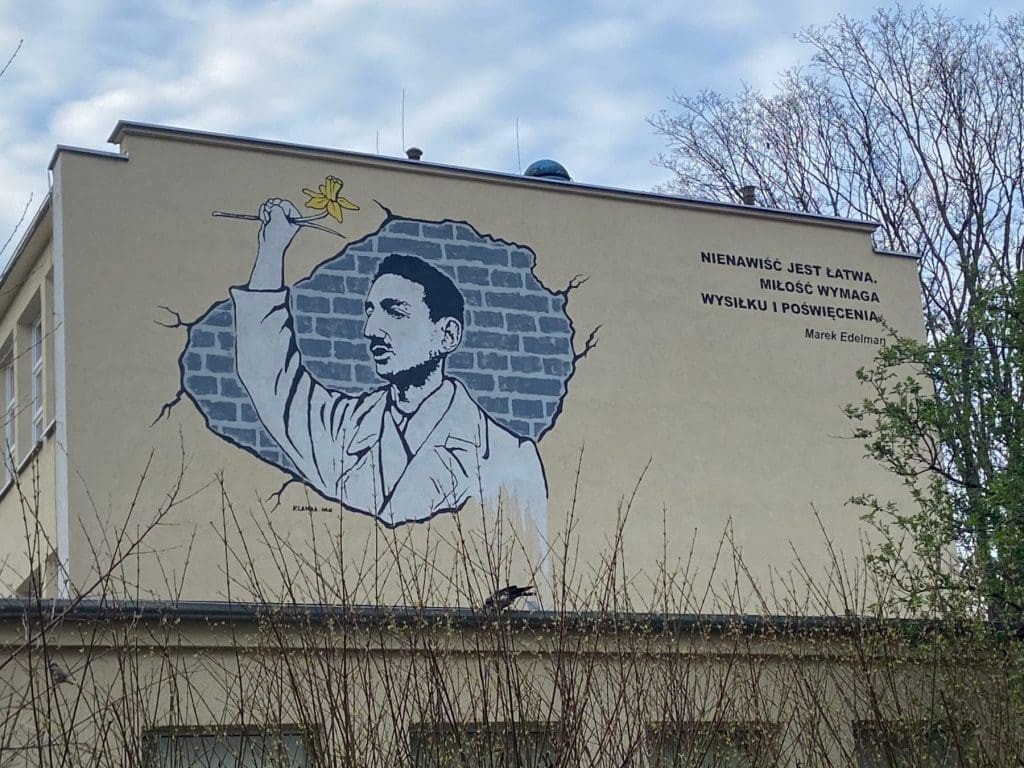
Nearby is the Wall of Remembrance which marks the spot where people lined up before being transported to Treblinka during the Grossaktion. It lists the first names of the transported, as their full names have been lost – thus creating an impression of the universality of their fate, many of those who died shared the same name. Beside the wall children play hide and seek while birds tweet in the trees, creating a welcome sense of rebirth after the horrors I have just reimagined.
Things To Do in Warsaw Poland
For more inspiration on what to do in Warsaw, visit the official Warsaw tourism website.
All images by Mark Bibby Jackson.
